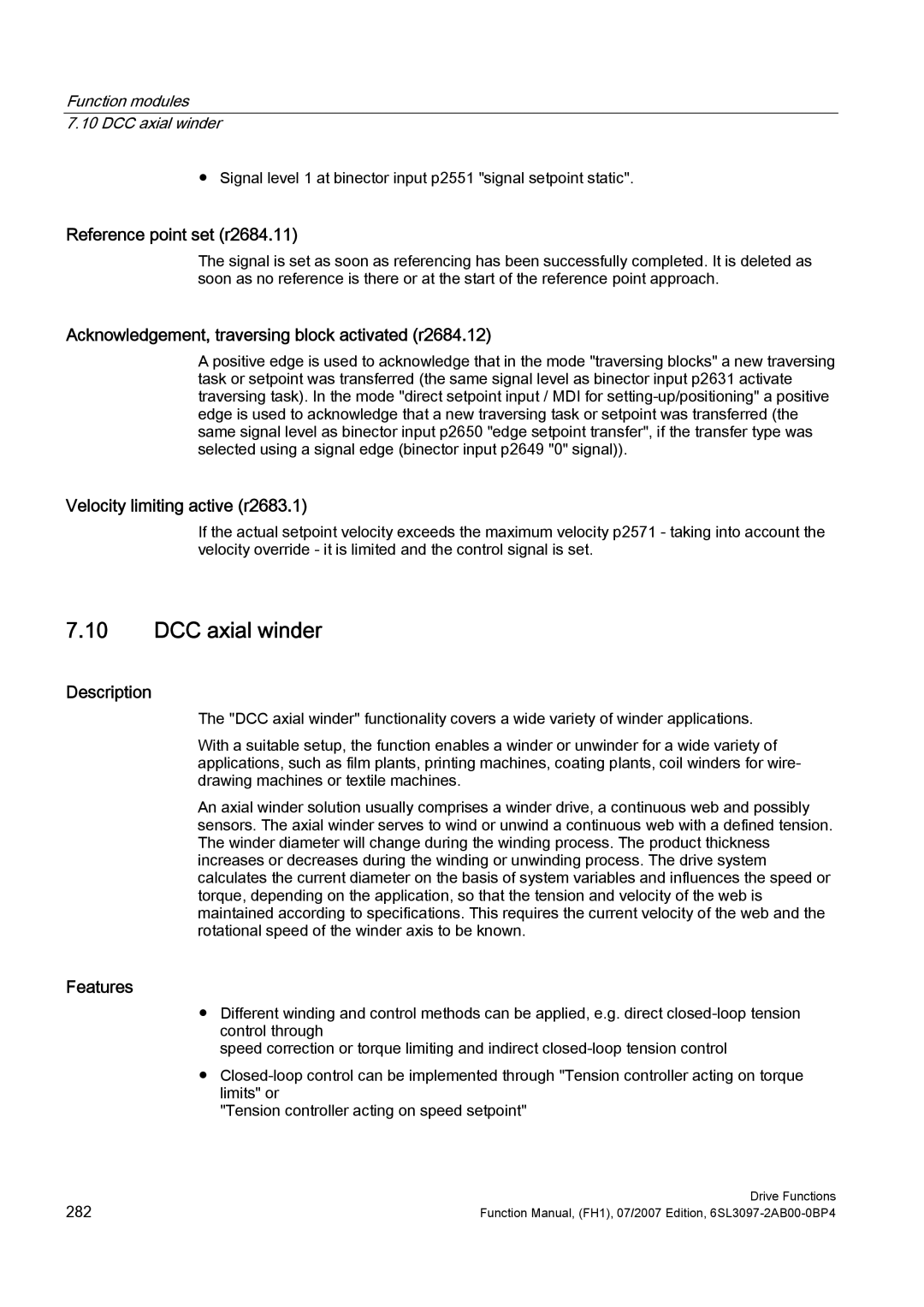Function modules
7.10DCC axial winder
●Signal level 1 at binector input p2551 "signal setpoint static".
Reference point set (r2684.11)
The signal is set as soon as referencing has been successfully completed. It is deleted as soon as no reference is there or at the start of the reference point approach.
Acknowledgement, traversing block activated (r2684.12)
A positive edge is used to acknowledge that in the mode "traversing blocks" a new traversing task or setpoint was transferred (the same signal level as binector input p2631 activate traversing task). In the mode "direct setpoint input / MDI for
Velocity limiting active (r2683.1)
If the actual setpoint velocity exceeds the maximum velocity p2571 - taking into account the velocity override - it is limited and the control signal is set.
7.10DCC axial winder
Description
The "DCC axial winder" functionality covers a wide variety of winder applications.
With a suitable setup, the function enables a winder or unwinder for a wide variety of applications, such as film plants, printing machines, coating plants, coil winders for wire- drawing machines or textile machines.
An axial winder solution usually comprises a winder drive, a continuous web and possibly sensors. The axial winder serves to wind or unwind a continuous web with a defined tension. The winder diameter will change during the winding process. The product thickness increases or decreases during the winding or unwinding process. The drive system calculates the current diameter on the basis of system variables and influences the speed or torque, depending on the application, so that the tension and velocity of the web is maintained according to specifications. This requires the current velocity of the web and the rotational speed of the winder axis to be known.
Features
●Different winding and control methods can be applied, e.g. direct
speed correction or torque limiting and indirect
●
"Tension controller acting on speed setpoint"
282 | Drive Functions |
Function Manual, (FH1), 07/2007 Edition, |
